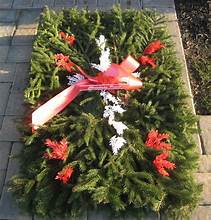Introduction
The demonstration of memorializing our friends and family who have died holds significance of Blankets for Gravesites in many societies and social orders all over the planet. It fills in as a manner to give recognition to their memory, protect their heritage, and give solace to one side behind. One practice that has acquired prominence lately is the utilization of Significance of Blankets for Gravesites. These covers, frequently decorated with sincere messages, lovely plans, or strict images, offer a novel and soothing method for respecting the departed. In this thorough article, we will investigate the set of experiences, social importance, types, and profound effects of covers for gravesites or Honoring Loved Ones: Significance of Blankets for Gravesites.
Table of Contents
Introduction
I. The Historical Origins of Blankets for Gravesites – Native American Burial Blankets – Victorian Mourning Blankets – Military Honors and Flags
II. The Cultural Significance of Blankets for Gravesites – Comfort and Warmth – Connection to Ancestral Spirits – Personalization and Expression of Love
III. Types of Blankets for Gravesites – Traditional Woven Blankets – Quilted Memorial Blankets – Fleece Blankets – Religious or Spiritual Blankets – Personalized Photo Blankets
IV. Creating a Blanket for a Gravesite – Selecting Materials – Customizing the Design – Incorporating Personalization – Choosing Size and Shape – Quality and Durability – Ethical Considerations
V. The Emotional Impact of Blankets for Gravesites – Comfort and Closure – A Source of Solace – Conversation Starter – Honoring Cultural Traditions
VI. Contemporary Perspectives on Blankets for Gravesites – Eco-Friendly Options – DIY Memorial Blankets – Online Customization – Virtual Memorials
VII. Challenges and Considerations – Maintenance – Cemetery Regulations – Cultural Sensitivity – Emotional Impact
VIII. Conclusion
I. The Verifiable Underlying Foundations of Covers for Gravesites
The practice of putting covers on gravesites is certainly not another one. It has profound authentic roots in different societies, each with its arrangement of convictions and practices. Understanding the authentic setting can reveal insight into why this custom endures today.
Honoring Loved Ones: Significance of Blankets for Gravesites

Local American Cover Entombments
Covers have held an extraordinary spot in Local American societies for a long time. In certain clans, for example, the Lakota Sioux, it was standard to envelop the departed with an exceptional entombment cover enhanced with emblematic examples and plans. These covers were viewed to give warmth and solace to the soul of the left as they set out on their excursion to life following death. The training additionally conveyed the clan’s regard for the departed and their lamenting family.
Victorian Grieving Covers
During the Victorian period, which crossed from the mid-nineteenth hundred years to the mid-twentieth hundred years, it was exceptionally organized and expanded to grieve customs. Families would take extraordinary measures to memorialize their friends and family, and the utilization of grieving covers was normal. These covers were frequently complicatedly weaved with images of grieving, for example, sobbing willow trees, urns, or heavenly messengers. They were hung over the coffins or set at the gravesites as a noticeable articulation of misery and recognition.
Military Distinctions and Banners
In the US, the custom of hanging a banner over a coffin during a tactical memorial service is a notable practice. The banner fills in as a praiseworthy image and regard for the departed’s support of the country. While not precisely a cover, this custom epitomizes utilizing materials to honor the left.
II. The Cultural Significance of Blankets for Gravesites
The cultural significance of blankets for gravesites extends beyond their historical roots. Different cultures and belief systems imbue these blankets with diverse meanings and symbolism.
Comfort and Warmth
Across cultures, blankets represent warmth and comfort. Placing a blanket on a gravesite is a symbolic gesture of providing solace to the departed soul. It signifies the hope that the deceased finds peace and warmth in the afterlife, free from the hardships of the earthly realm.
Connection to Ancestral Spirits
In many indigenous cultures, blankets for gravesites are believed to serve as a bridge between the living and the spirit world. These blankets are seen as a way to connect with ancestral spirits, inviting them to visit and bestow blessings upon the living. They are a tangible representation of the ongoing relationship between the living and their deceased loved ones.
Personalization and Expression of Love
Modern grave blankets often feature personalized designs, messages, and images that reflect the unique personality and interests of the deceased. This customization allows families to express their love and memories tangibly, creating a lasting tribute that goes beyond a simple headstone.
III. Types of Blankets for Gravesites

Blankets for gravesites come in various forms and materials, catering to different preferences and cultural backgrounds. Here are some common types:
Traditional Woven Blankets
Woven blankets, often made from wool or other natural fibers, are a traditional choice for gravesites. These blankets can be customized with intricate patterns, colors, and symbols that hold personal or cultural significance.
Quilted Memorial Blankets
Quilted blankets join the glow of a customary cover with the imaginativeness of stitching. They are frequently made by hand with incredible scrupulousness, including customized weaving, photos, and different components that commend the existence of the departed.
Fleece Blankets
Fleece blankets are a soft and comforting option for gravesites. They can be easily customized with vibrant colors and meaningful designs. Fleece blankets are lightweight and durable, making them a practical choice for outdoor use.
Religious or Spiritual Blankets
Many religious and spiritual traditions have their specific blankets or shrouds used in funeral and burial rituals. These blankets may feature religious symbols, verses, or prayers that hold deep spiritual significance.
Personalized Photo Blankets
Photo blankets are a poignant way to commemorate a loved one’s life. They can be adorned with a collage of photographs, capturing cherished memories and moments. Photo blankets offer a visual representation of a life well-lived.
IV. Creating a Blanket for a Gravesite
Designing a blanket for a gravesite is a deeply personal and meaningful process. Here are some steps to consider when creating one:
Selecting Materials
Choose a material that resonates with the deceased or reflects their personality. Wool, fleece, cotton, or silk are popular choices, each offering a different texture and feel.
Customizing the Design
Consider the design components that will decorate the cover. This might incorporate tones, examples, images, and messages. Team up with a gifted craftsman or fashioner to rejuvenate your vision.
Incorporating Personalization
Include personalized elements such as the deceased’s name, birth, and death dates, photographs, and any other details that hold special meaning. These elements make the blanket a unique tribute to their life.
Choosing Size and Shape
Select the appropriate size and shape for the blanket, keeping in mind the intended use and display. Some families choose blankets that can be draped over the casket, while others opt for larger ones that cover the entire gravesite.
Quality and Durability
Ensure that the chosen material and craftsmanship result in a high-quality and durable blanket. It should withstand outdoor conditions and maintain its beauty over time.
Ethical Considerations
Be mindful of cultural and religious sensitivities when designing the blanket. It’s important to respect the beliefs and practices of the deceased and their family.
V. The Emotional Impact of Blankets for Gravesites
The presence of a sweeping at a gravesite can sincerely affect the individuals who visit. It fills in as a substantial sign of the individual who has died and the affection that encompasses them.
Comfort and Closure
Blankets for gravesites offer a sense of comfort and closure to grieving families. They provide a physical connection to the deceased and offer a space for reflection and remembrance.
A Source of Solace
Visitors to a gravesite frequently track down comfort within the sight of a cover. It can give a feeling of warmth and security as though the withdrawn cherished one is as yet looking after them.
Conversation Starter
Blankets with personalized designs and photographs can spark conversations among visitors. Sharing stories and memories of the deceased can be a healing experience for family and friends.
Honoring Cultural Traditions
For many, placing a blanket at a gravesite is a way to honor cultural or religious traditions. It allows families to pay homage to their heritage and uphold customs that hold deep meaning.

VI. Contemporary Perspectives on Blankets for Gravesites
In recent years, the practice of using blankets for gravesites has gained popularity and evolved in several ways:
Eco-Friendly Options
As environmental awareness grows, some families are opting for eco-friendly burial blankets made from sustainable materials. These blankets decompose naturally, minimizing the environmental impact of traditional burials.
DIY Memorial Blankets
The DIY (Do It Yourself) movement has extended to memorial blankets, with some individuals and families creating their personalized blankets as a labor of love. This hands-on approach allows for a deep sense of connection to the process.
Online Customization
Advancements in technology have made it easier than ever to design and order customized blankets online. Families can work with designers remotely to create the perfect tribute for their loved ones.
Virtual Memorials
In an increasingly digital age, virtual memorials have become a way to honor the deceased. Families can create online tributes that include images of the blanket, along with stories and memories shared by friends and family.
VII. Challenges and Considerations
While blankets for gravesites can be a beautiful and meaningful way to honor the deceased, there are some practical considerations and challenges to keep in mind:
Maintenance
Blankets placed at gravesites are exposed to the elements, which can lead to wear and tear over time. Families should be prepared to periodically replace or maintain the blanket to ensure its longevity.
Cemetery Regulations
Different cemeteries may have varying rules and regulations regarding the use of blankets at gravesites. It’s important to check with the cemetery administration to ensure compliance with their guidelines.
Cultural Sensitivity
When designing a blanket, it’s crucial to be culturally sensitive and respectful of the deceased’s cultural or religious background. This may involve consulting with religious leaders or community elders to ensure that the chosen design and symbols are appropriate.
Emotional Impact
While blankets can provide comfort and solace, they may also evoke strong emotions in visitors. It’s essential to consider how the presence of a blanket might affect different individuals, especially those who are grieving.
VIII. Conclusion
The practice of using blankets for gravesites is a timeless tradition that has evolved and adapted to contemporary needs and sensibilities. Whether through the intricate weaving of cultural symbols, the warmth of personalized designs, or the comfort of a loved one’s photograph, these blankets serve as a beautiful and heartfelt tribute to those who have passed away.
Blankets for gravesites transcend the physical realm, acting as a bridge between the living and the deceased. They offer comfort, association, and an unmistakable method for praising the existence of our friends and family. As we explore the intricacies of despondency and recognition, these covers stand as persevering through images of adoration, honor, and the timeless connection between the living and the withdrawn.
May you like:




